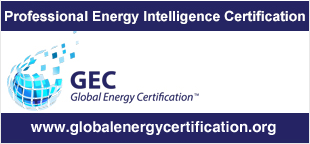NRG Expert provides a comprehensive analysis of the energy security industry. This energy security market research looks at; the grid, the rationale for storage, energy risks for businesses, energy shortages, energy reserves, technologies and much more. The report outlines key energy security data, statistics and market analysis.
>> Go Back to the Product Overview
- 1 Executive Summary 15
- 2 Introduction 20
- 2.1 Case for the smart grid 20
- 2.2 Definition of the smart grid 25
- 2.3 The business case of the smart grid 29
- 3 Barriers to the development of the smart grid 32
- 4 Storage 34
- 4.1 Mechanical Storage 35
- 4.2 Electrochemical storage 37
- 4.3 Electromagnetic storage 39
- 4.4 Water heaters 39
- 4.5 Coupling to new energies 40
- 4.6 Developments 40
- 5 Electric Vehicles (EVs) 41
- 6 Other smart grid applications 45
- 6.1 Water 47
- 6.2 Natural gas 47
- 7 Standardisation 49
- 8 Country drivers 52
- 9 Europe 54
- 9.1 Austria 65
- 9.2 France 66
- 9.3 Germany 66
- 9.4 Italy 67
- 9.5 Netherlands 69
- 9.6 Nordic Region (Denmark, Finland, Norway and Sweden) 69
- 9.7 Portugal 71
- 9.8 Spain 72
- 9.9 UK 72
- 10 Rest of the World 75
- 10.1 Australia 75
- 10.1.1 Electric vehicles 82
- 10.1.2 Players 82
- 10.2 Brazil 83
- 10.2.1 Electric vehicles 86
- 10.2.2 Players 86
- 10.3 Canada 87
- 10.3.1 Players 89
- 10.4 Chile 89
- 10.5 China 90
- 10.5.1 Electricity market 92
- 10.5.2 State Grid Corporation of China 93
- 10.5.3 Electric vehicles 97
- 10.5.4 Players 98
- 10.5.5 Projects 102
- 10.6 Ecuador 103
- 10.6.1 Players 103
- 10.7 India 104
- 10.7.1 Players 106
- 10.8 Japan 107
- 10.8.1 Electric vehicles 115
- 10.8.2 Players 116
- 10.8.3 Fujitsu 116
- 10.8.4 MegaChips 116
- 10.8.5 Toshiba 116
- 10.8.6 Utilities 116
- 10.8.7 International market 118
- 10.9 Korea, South 120
- 10.9.1 Projects 128
- 10.9.2 International market 130
- 10.9.3 Players 130
- 10.10 Mexico 133
- 10.11 New Zealand 133
- 10.12 Russia 135
- 10.12.1 Players 135
- 10.13 Singapore 136
- 10.14 South Africa 137
- 10.15 United Arab Emirates (UAE) 138
- 10.15.1 Players 139
- 10.16 United States of America (USA) 139
- 10.16.1 Regional variation 148
- 10.16.2 Electric vehicles 165
- 10.16.3 Players 166
- 11 Investment 168
- 12 Costs 171
- 13 Security 175
- 13.1 Data privacy issues 176
- 13.2 Energy Theft 177
- 13.3 Malicious intent 178
- 13.4 Market size 180
- 13.5 Players 180
- 14 Players in the smart grid 183
- 14.1 Smart Meters 184
- 14.2 Online Data Management Tools 192
- 14.2.1 Google 192
- 14.2.2 Microsoft 194
- 14.3 Other players 195
- 14.3.1 ABB 195
- 14.3.2 Cisco 196
- 14.3.3 Comverge 196
- 14.3.4 Cooper Power Systems 198
- 14.3.5 Current Group 199
- 14.3.6 eMeter 199
- 14.3.7 EnerNOC 199
- 14.3.8 GE 200
- 14.3.9 GridPoint 201
- 14.3.10 IBM 203
- 14.3.11 Oracle 204
- 14.3.12 SEL, Schweitzer Engineering Laboratories 205
- 14.3.13 Siemens 206
- 14.3.14 Silver Springs 206
- 14.3.15 SmartSynch 207
- 15 Smart metering projects worldwide 209
Figures
Figure 2.1. Base, intermediate and peak load by time of day 22
Figure 2.2. Cumulative Hours of Operation 23
Figure 2.3. Traditional and future electric grid systems – Traditional grid (left), future grid (right) 26
Figure 2.4. Meters 27
Figure 2.5. Percentage utility operating savings based on real savings at AMI deployments 31
Figure 4.1. Different grid storage options 35
Figure 4.2. Salt structures and existing gas storage site in Europe 37
Figure 4.3. Projected cost of electric vehicle batteries in the US, 2010 – 2030 39
Figure 5.1. Comparison of different electric power train configurations 41
Figure 5.2. Electric vehicle/ plug-in hybrid electric vehicle roadmap vision for expansion in sales, 2010 – 2050 42
Figure 5.3. Future of the electric car and lithium ion battery markets 43
Figure 6.1. Advanced meter deployments in North America 45
Figure 6.2. Advanced meter deployments in Europe 46
Figure 7.1. Members of the Global Smart Grid Federation, July 2010 49
Figure 9.1. Liberalisation of the electricity market in Europe 54
Figure 9.2. Smart meter deployment by EU member states 56
Figure 9.3. SmartGrids ERA-NET Project – Participating Countries 60
Figure 9.4. The TSO implementation plan 61
Figure 9.5. Identification of priority functional projects, DSO 62
Figure 9.6. European Electricity Grid Initiative estimated programme costs, 2010 – 2019, € million 63
Figure 9.7. SET Roadmap 2010/2020 proposed to the EU 63
Figure 9.8. Medium and low voltage smart grid projects in Europe 64
Figure 9.9. Proposed grid investments in the Nordic region 69
Figure 10.1. Australia’s electricity and gas network companies 76
Figure 10.2. Timeline for the development of the smart grid in Australia at the state level 76
Figure 10.3. Priority areas for the Energy Networks Association in Australia, 2010 – 2012 78
Figure 10.4. Electric vehicle chargers that will be deployed in Victoria, Australia – Changepoint charge station (left), Better Place charge sport (centre), ECOtality residential charger (right) 82
Figure 10.5. Macro-grid vision for Brazil 84
Figure 10.6. Major transmission interconnections between Canada and the US 88
Figure 10.7. Investment in the power sector in China, 2006 – 2009, US $ billions 91
Figure 10.8. China Electricity Load & Resource Centres 91
Figure 10.9. Geographic area covered by the two grid operators in China 93
Figure 10.10. Map of the ten electric power companies in Japan by service area 108
Figure 10.11. National trunk line connections in Japan 109
Figure 10.12. Changing factors around electricity demand and supply in Japan 110
Figure 10.13. CRIEPI roadmap of the next generation grid in Japan 114
Figure 10.14. CRIEPI expectations of different ICT networks required 114
Figure 10.15. Japanese grid of the future 115
Figure 10.16. Planned NEDO microgrids in Albuquerque and Los Alamos, New Mexico– Albuquerque (left), Los Alamos (right) 119
Figure 10.17. Procedures for operations of demand resource spot market in Korea 122
Figure 10.18. Schematic of the proposed DRRC’s standard open ADR (automatic demand response) operating system in Korea 122
Figure 10.19. Development of Korea’s planned real-time demand resource trading system 123
Figure 10.20. Ten power IT projects in Korea 126
Figure 10.21. Timeline for the development of the ten power ICT projects in Korea 127
Figure 10.22. Korean players in the Jeju Island smart grid project 128
Figure 10.23. Korean power network 129
Figure 10.24. Wind capacity in the US as a percentage of total installed power capacity 141
Figure 10.25. RPS policies in the US with solar or distributed provisions, October 2010 141
Figure 10.26. Macro-grid vision for the USA 142
Figure 10.27. Categories of US projects receiving smart grid investment grants, July 2010, US $ million 144
Figure 10.28. Locations of smart grid demonstration and large-scale energy storage projects 149
Figure 10.29. Utility scale smart meter deployments, plans, and proposals in the US, September 2010 149
Figure 10.30. Growth market for smart technology in the US, US $ billion 165
Figure 11.1. Financial new investment by technology, 2009, US $ billion 168
Figure 11.2. Corporate and government R&D investment by technology, 2009, US $ billion 169
Figure 11.3. Smart grid capital spending: 2007 – 2010, US $1.68 billion 169
Figure 11.4. Top ten smart grid federal stimulus investments by country, 2010, US $ million 170
Figure 12.1. Projected average cost of smart grid deployment, US $ million 172
Figure 12.2. Projected development of the smart grid market, 2008 – 2030, US $ billion 173
Figure 12.3. Projected smart grid market size, 2009 – 2014, US $ billion 173
Figure 12.4. Projections for the US and global smart grid market by technology, US $ billion 174
Figure 13.1. Attack points in the smart grid 178
Figure 13.2. Projected size of the smart grid security market by geography, US $ billion 180
Figure 14.1. ‘End-to-End’ smart grid: leading players by market segment 183
Figure 14.2. Google PowerMeter 193
Figure 14.3. Microsoft Holm partners 195
Figure 14.4. Cisco focus on collection and transmission of power data 196
Figure 14.5. Comverge business model 197
Figure 14.6. Comverge products 198
Figure 14.7. GE communications system 201
Figure 14.8. Gridpoint energy management solutions 202
Figure 14.9. Expected evolution of Orcale smart grid services 204
Figure 14.10. Oracle’s smart grid products 205
Figure 14.11. Schweizer Engineering Laboratories’ smart grid solutions 206
Figure 14.12. Silver Springs smart grid solutions 207
Figure 14.13. SmartSynch metering communications services 208
Figure 14.14. SmartSynch partnerships 208
Figure 15.1. Map of smart metering projects in Europe 209
Figure 15.2. Map of smart metering projects in the Middle East 209
Figure 15.3. Map of smart metering projects in the Australasia 210
Figure 15.4. Map of smart metering projects in North America 210
Figure 15.5. Map of smart metering projects in South America 211
Figure 15.6. Map of smart metering projects in Africa 211
Tables
Table 2.1. Selected major blackouts 21
Table 2.2. Pricing tariffs for the smart grid 24
Table 2.3. Comparison of Today’s Grid and Smart Grid 25
Table 2.4. Network requirements for smart grid applications 27
Table 2.5. Strengths and weaknesses of different WAN technologies 28
Table 2.6. Overview of IEEE standards 29
Table 2.7. Other technologies promoted by the development of the smart grid market 30
Table 4.1. Main energy storage technologies 34
Table 4.2. Latest prices for energy storage in Great Britain and Germany 35
Table 4.3. Electrochemical Storage Companies 38
Table 5.1. Electric vehicles and their expected launch date onto the US market 44
Table 6.1. Functional capabilities of different types of smart grid technologies 46
Table 7.1. Status of members of the Global Smart Grid Federation, July 2010 50
Table 8.1. Global Smart Grid Development Strategies 52
Table 8.2. Comparison of different smart meter rollouts 53
Table 9.1. Status of the smart grid in different EU countries 56
Table 9.2. Electric and gas metering targets and status in European countries 57
Table 9.3. Founding transmission system and distribution system operators 61
Table 9.4. The TSO/DSO implementation plan 62
Table 9.5. Likely communications technology deployed in different EU countries 64
Table 9.6. Pilot smart grid projects in Austria 65
Table 9.7. Proposed and actual smart grid projects in Germany 67
Table 9.8. Comparative cost of smart meter rollouts 68
Table 9.9. Norwegian smart grid research projects, 2010 70
Table 9.10. Smart grid partnerships in the Nordic region 71
Table 9.11. Funding for smart grid and smart grid-related R&D in the UK 73
Table 10.1. Electricity markets in key Australian states 75
Table 10.2. Australia’s activity in the smart grid compared to Europe, the USA and Ontario, August 2010 79
Table 10.3. Selected charges for customers for smart meters in Victoria, Australia in 2010 81
Table 10.4. Policies and actions to promote the development of the smart grid in Brazil 85
Table 10.5. Brazilian utilities and smart grid projects 86
Table 10.6. Planned and ongoing smart grid activities in Canadian provinces, as of May 2010 89
Table 10.7. Trial Projects in China 94
Table 10.8. State Grid’s planned roll out of the Smart Grid 96
Table 10.9. Promising smart meter players in China 99
Table 10.10. Deployment of smart meters and advanced metering infrastructure (AMI) in China 101
Table 10.11. Key developments in the uptake of broadband-over-power line (BPL) by Ecuadorian utilities 104
Table 10.12. Benefits of smart grids to Indian utilities 105
Table 10.13. Ministry of Power fifteen year smart grid road map 106
Table 10.14. Planned smart grid projects in India 106
Table 10.15. Smart meter contracts awarded in India 107
Table 10.16. Japanese smart grid projects, February 2010 111
Table 10.17. Selected smart grid projects in the pipeline in Japan 112
Table 10.18. Next generation energy system expectations for the Japanese smart grid 113
Table 10.19. Smart grid and smart meter projects planned by Japanese utilities 117
Table 10.20. NEDO’s demonstration projects in New Mexico 118
Table 10.21. National Korean Smart Grid Strategy Road Map 124
Table 10.22. In depth Korean smart grid road map 125
Table 10.23. Five areas of the Jeju test bed 129
Table 10.24. Grid upgrades completed and being planned across New Zealand 134
Table 10.25. Smart meter projects in New Zealand 134
Table 10.26. Smart meter projects in South Africa 138
Table 10.27. Main players in UAE smart grid market 139
Table 10.28. Average cost for one hour of power interruption by industry in the US 140
Table 10.29. Number of blackouts in the US every year 140
Table 10.30. US interconnection projects receiving American Recovery and Reinvestment Act funding, December 2009 142
Table 10.31. Incentives for smart grid projects included in the 2007 EISA 143
Table 10.32. Background on the 100 projects receiving smart grid investment grants from the ARRA 145
Table 10.33. US Cyber Security Projects receiving ARRA funds, 23rd September 2009 146
Table 10.34. Utility scale smart meter deployments, plans, and proposals in the US, September 2010 150
Table 10.35. State regulatory framework summary table, July 2010 156
Table 10.36. US regulatory model examples 159
Table 10.37. Milestones for smart grid R&D projects in the US, US Department of Energy 161
Table 10.38. Products part of a US Department of Energy’s vision for the development of the smart grid 162
Table 10.39. Goals to achieve the US Department of Energy smart grid vision 162
Table 10.40. Selected US Utilities with contracts for smart meters in 2010 166
Table 10.41. Selected US Utilities with contracts with other smart grid companies in 2010 167
Table 12.1. Projected progress and estimated costs in smart-grid implementation from 2008 to 2050 171
Table 12.2. Projected average cost of smart grid deployment, US $ million 172
Table 13.1. Selected known security breaches in the power sector 175
Table 13.2. Key text in the California smart grid privacy law 177
Table 13.3. Methods of manipulation of smart meters 177
Table 13.4. Methods and products used for securing critical enterprise networks 179
Table 13.5. Major defence security players in the cyber security market 181
Table 14.1. Key technologies and capabilities enabling smart grid deployment 184
Table 14.2. Main smart meter manufacturers 185
Table 14.3. Main smart grid players 191
Table 14.4. Strategic agreements, partnerships or collaborations between major smart grid players 192
Table 14.5. Google partnerships with utilities and device manufacturers or suppliers 193
Table 14.6. IBM smart grid maturity model 203
Price: £1,600.00
Prod. Code: NRGSGR1
>> Go Back to the Product Overview
















